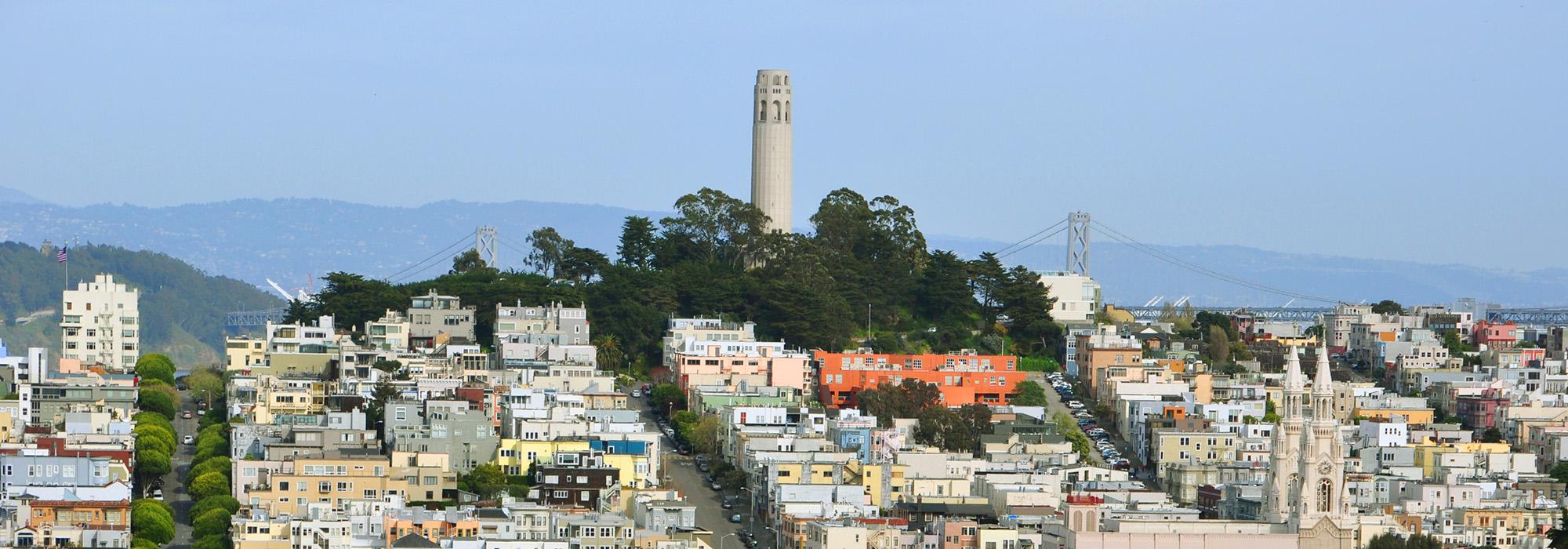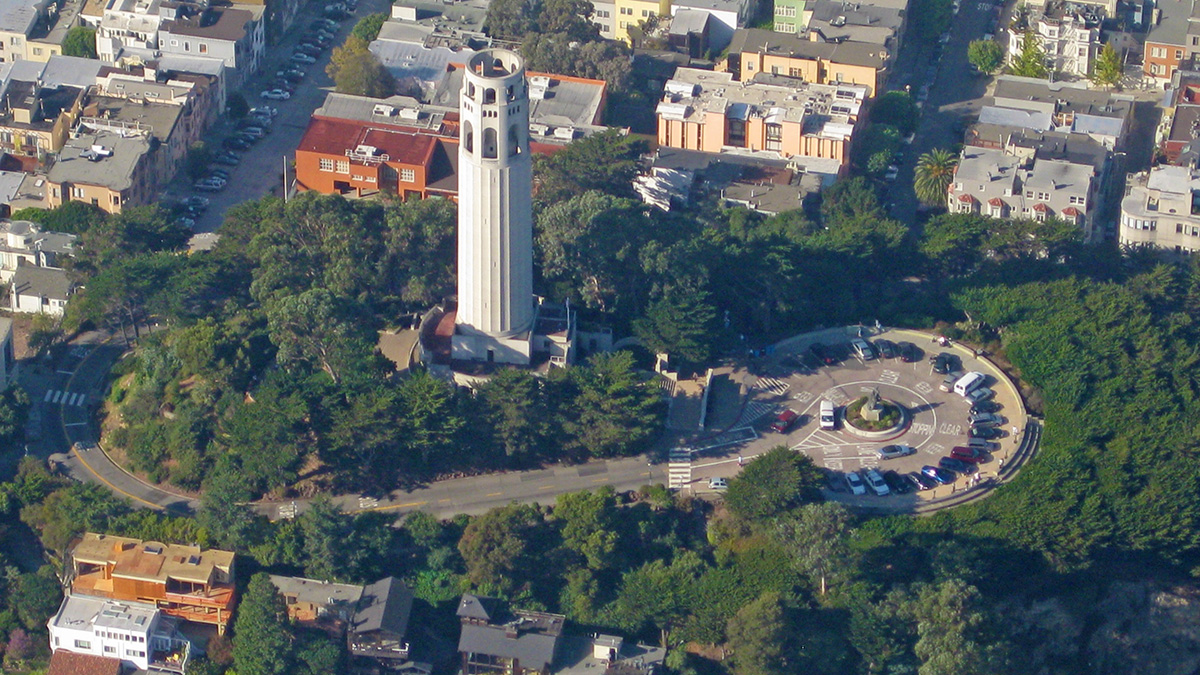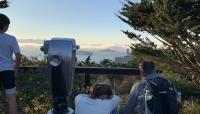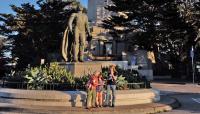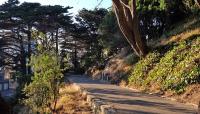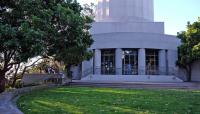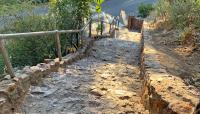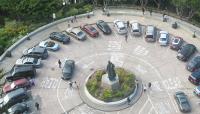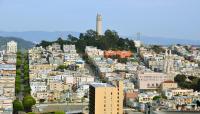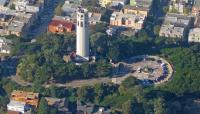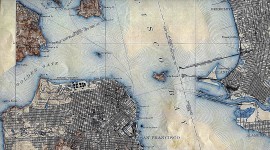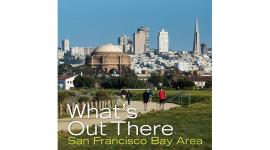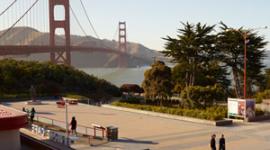Landscape Information
Located on Telegraph Hill, this hilltop parcel originally contained a semaphore until 1870. To celebrate the centennial of the United States, George Hearst and other civic leaders purchased four steep lots, donating them to the city as Pioneer Park in 1876. Inspired by the Cliff House at Lands End, developer Frederick Layman built a funicular on Greenwich Street in 1884 that ran to a large entertainment pavilion, called the German Castle (destroyed in the early 1900s) on the crest of the hill. In his 1905 general plan for San Francisco, Daniel Burnham recommended two large terraces, a tower, and a Capitoline Hill-style staircase for the park. Improvements by architect Albert Lansburgh in 1923 created the first paved roadway, along with stepped terraces and an esplanade. The most prominent feature is the 210-foot-tall Art Deco Coit Memorial Tower, designed by Arthur Brown, Jr., dating from 1933. During the 1930s the Works Progress Administration enhanced the site, constructing rubble walls and sidewalks, and planting cypress, pine, and tea trees. In 1995 the park underwent a series of improvement projects that rebuilt stairways, provided handicap access, and remediated erosion.
Most of the five-acre park is a steep, tree-covered hillside overlooking the San Francisco Bay. The summit is accessed by the Greenwich Steps and the Filbert Street Stairs, which ascend the eastern slope, and by the winding Telegraph Hill Boulevard that culminates in a roundabout at the summit. Well known for its many fresco paintings completed in 1934 in the Social Realism style by the Public Works of Art Project, the tower culminates in a two-story observation deck with panoramic views of the bay. Coit Memorial Tower was listed in the National Register of Historic Places in 2008.



